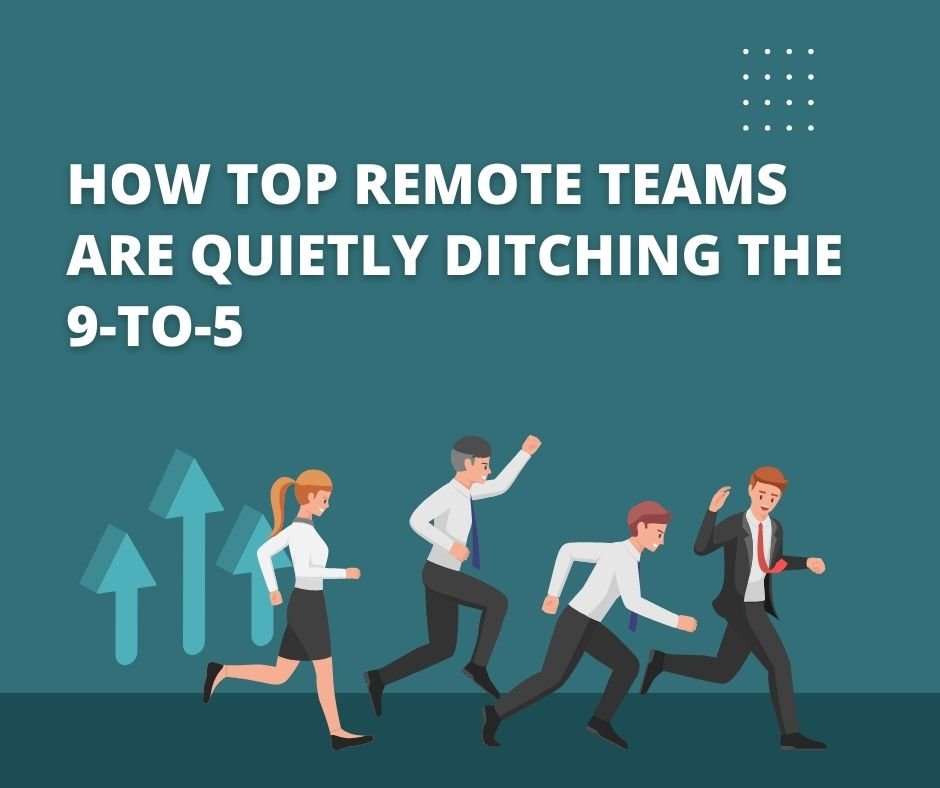While headlines obsess over return-to-office mandates, a quiet revolution is transforming how elite remote teams operate. The most productive distributed companies aren’t just working from home—they’re completely reimagining work beyond the constraints of real-time collaboration. Welcome to the async-first movement, where work happens when it’s most effective, not when it’s most convenient for managers.
Why Async Work is Exploding in Popularity
The traditional 9-to-5 schedule was designed for factory workers, not knowledge workers. As remote work becomes permanent, companies are discovering that forcing synchronous work creates more problems than it solves:
- 72% of remote workers report constant meetings as their #1 productivity killer (Harvard Business Review, 2024)
- Global teams lose 3.2 hours per day waiting for responses across time zones (GitLab Remote Work Report)
- 64% of employees say they do their best work outside standard business hours (FlexJobs Survey)
Forward-thinking companies are seeing dramatic results from async-first approaches:
- GitLab reports 40% faster project completion times
- Zapier reduced meetings by 85% while increasing output
- Automattic (WordPress) maintains 98% employee retention with fully async workflows
The Hidden Costs of Synchronous Work Culture
- The Productivity Tax
Every unnecessary meeting interrupts deep work. Research shows it takes 23 minutes to fully regain focus after a context switch. For teams with 5+ daily meetings, that’s nearly 2 hours of lost productivity per employee every day. - The Creativity Penalty
Immediate responses yield surface-level thinking. A MIT study found async teams generated 53% more innovative solutions because they had time for reflection. - The Global Team Disadvantage
Time-zone differences create invisible hierarchies. Employees in “off hours” locations often miss key decisions or feel pressured to work unnatural schedules.

How Async-First Companies Operate Differently
- Documentation as a Cultural Value
At GitLab, the world’s largest all-remote company, if it’s not documented, it doesn’t exist. Their 2,000+ page handbook is updated in real-time, serving as the single source of truth. - The 24-Hour Response Standard
Basecamp pioneered this policy: no expectation of immediate replies. Urgent matters (less than 3% of communications) must be clearly marked. - Meeting ROI Scorecards
Before scheduling any call, Zapier employees must answer:
- Could this be resolved async?
- What specific decision needs to be made?
- Who absolutely needs to be involved?
This simple filter eliminated 62% of their meetings.
The Async Productivity Framework
- Deep Work Sprints
Protected 3-4 hour blocks for focused work. Employees at async companies report 2-3x more output during these periods compared to fragmented days. - Baton-Passing Workflows
Design teams at InVision work like relay races:
- Tokyo team works 9am-12pm → Documents progress
- London picks up at 1pm their time → Adds feedback
- NYC finalizes by EOD → Ships next morning
- Write-Once/Read-Many Policy
Common questions get turned into permanent documentation. New hires at async companies can find answers without interrupting colleagues.
Essential Async Tools
- Loom – Video messages preserve nuance better than text
- Slite – Beautifully designed documentation platform
- Tandem – Virtual office space for spontaneous connections
- Vowel – Meeting tool that forces agendas and records automatically
Overcoming Async Challenges
- The Isolation Factor
Solution: Scheduled virtual coffee chats and “watercooler” channels focused on personal connection. - Documentation Overload
Solution: Weekly “cleanup hours” where teams prune outdated information. - Slow Decision-Making
Solution: Clear decision-making frameworks and designated owners for different types of decisions.
Is Your Team Ready for Async?
Signs you should transition:
- More than 30% of time spent in meetings
- Constant time zone frustrations
- Important decisions get lost in chat threads
Start small with:
- Async daily standups via text
- “No Meeting Wednesdays”
- Documenting one recurring meeting’s content
The Future of Work is Async
The most successful companies of 2025 won’t measure attendance but output. They won’t track hours but impact. Async work isn’t just a pandemic adaptation—it’s the logical evolution of knowledge work.
As the CTO of an async-first company told me: “We don’t care when you work. We care what you ship. Our job is to remove obstacles, not create schedules.”
The data is clear: companies that embrace async principles see:
- 40-60% higher productivity
- 30-50% lower turnover
- 2-3x faster hiring (thanks to global talent pools)
- 85%+ employee satisfaction scores
Getting Started with Async
- Audit Your Synchronous Work
Track how much time your team spends in meetings and waiting for responses. - Create Documentation Standards
Start with meeting notes and project updates before expanding. - Set Response Expectations
Establish clear norms about urgency levels and response times. - Protect Focus Time
Implement “no meeting” blocks on calendars. - Measure What Matters
Shift metrics from activity (hours worked, messages sent) to outcomes (projects completed, goals achieved).

The async revolution isn’t about eliminating all real-time interaction—it’s about making it intentional rather than default. In an era of global teams and knowledge work, the companies that will thrive are those that recognize work is what you do, not where or when you do it.

